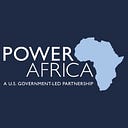Bridging Data and Policy to Plan Rwanda’s Energy Future
Photo Credit: Jordan Snowzell
Forecasting energy supply for an entire country is complex work. Many variables affect how much and what kinds of energy will match consumer needs at different times of day or different seasons of the year.
For example, in Rwanda, many hydropower plants face water shortages in dry seasons and must supplement with diesel generators at a high cost. Moreover, the majority of Rwanda’s energy demand comes from households, where daily peak electricity load occurs in the evening, when solar energy is not available.
To support Rwanda’s households and industry energy needs, the Ministry of Infrastructure (MININFRA) and state-owned Rwanda Energy Group (REG) used a sector standard known as a least-cost power development plan (LCPDP). The LCPDP integrates energy supply and demand calculations to produce low-cost energy expansion options. The plans should be updated twice per year, but without in-house skills to make the calculations, Rwanda’s LCPDP had become out of date and no longer reflected the realities of Rwanda’s energy landscape.
With plans to achieve net-zero emissions by 2050 while satisfying forecasted demand for electricity, the Government of Rwanda proactively sought ways to build internal skills and knowledge that could contribute to data-driven energy planning.
Pathways to Power
To support Rwanda’s energy assessment capacity, Power Africa is training REG and MININFRA to better understand the country’s domestic generation resources.
Through weekly training sessions, participants have learned to use Low-Emissions Analysis Platform (LEAP) software to analyze the physical resource availability, technical requirements, costs, and market potential of energy resources.
With new, detailed information about Rwanda’s energy supply, Power Africa facilitated an assessment of Rwanda’s energy resources and capacities, providing crucial information to update the LCPDP. With updated data, MININFRA can identify and pursue the most affordable energy investment options for the government and consumers.
Energy Planning for Climate Change
With many natural resources and a net-zero emissions goal, Rwanda has an interest in mitigating the effects of climate change on its green energy resources.
The government worked with Power Africa to incorporate the effects of climate change into the LEAP resource calculations. For example, the LEAP software can now integrate the impacts of drought and flooding on hydropower, Rwanda’s main energy resource. This information can be used to guide climate risk mitigation and strategic planning. Power Africa also worked with REG and MININFRA to use LEAP software modeling data to identify decarbonization strategies.
The climate change assessment shows how different technologies can be used to expand clean energy. This activity marks the first time that Rwanda has integrated climate change data into its energy assessments.
Rwanda-Led Resource Assessments
Rwanda has progressive energy policies and is building a culture of data to achieve its energy goals. With support from Power Africa, Rwanda’s key energy institutions can now lead the energy resource assessments that ensure the country’s LCPDPs and policies are evidence-based and realistic.
Those assessments can also serve as a basis for power purchase agreements between the government and private sector energy developers.
With energy objectives, policy pathways, and new analytical capacity, Rwanda is making important strides toward energy self-reliance.
